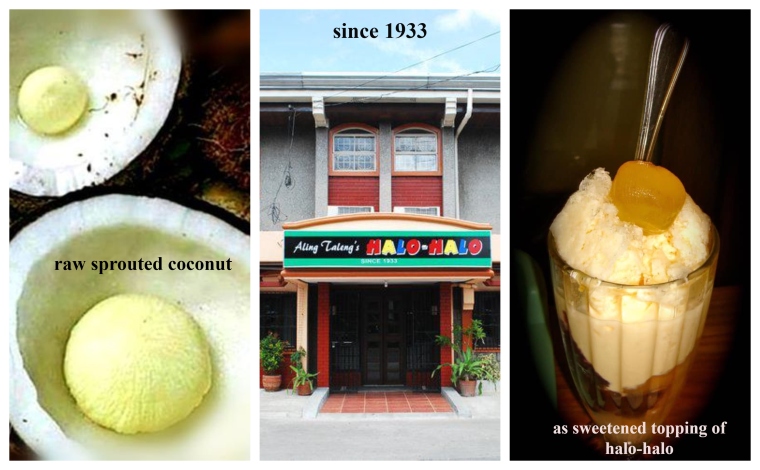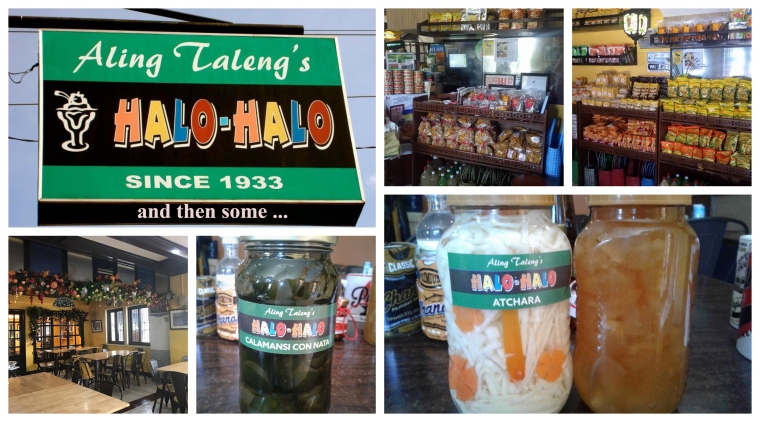Dearest readers, are you familiar with Nuestra Señora de los Dolores de Turumba? If not, allow Tita S to tell you about her.
Here are 6 facts about Nuestra Señora de los Dolores de Turumba:
1.The Nuestra Señora de los Dolores de Turumba, or Our Lady of Sorrows of Turumba, is a 9 by 11 inches (23 by 28 cm) oil on canvas painting of the Virgin Mary as Our Lady of Sorrows1.

The original image of Our Lady of Sorrows of Turumba, an oil painting, 1788 – Photo by Randy Caponpon, DM, https://en.wikipedia.org/wiki/Our_Lady_of_Turumba#/media/File:TurumbaIcon.jpg
The word turumba is from the Tagalog2 phrase “Natumba sa laki ng tuwa” (“Had trembled in great joy”), based on stories that the townspeople sang and danced to welcome this painting upon its discovery on September 15, 1788.3 Read more about this below, see fact 4.
2. The face of Our Lady of Sorrows1 is contorted by pain, from the dagger plunged into her heart, which Simeon4 prophesied.
3. This painting is enshrined at the Saint Peter of Alcantara Parish Church5 in the town of Pakil6, in the province7 of Laguna8, in the Calabarzon9 Region10 of the Philippines. Know more about this church in my post: ST. PETER OF ALCANTARA PARISH CHURCH, PAKIL, LAGUNA
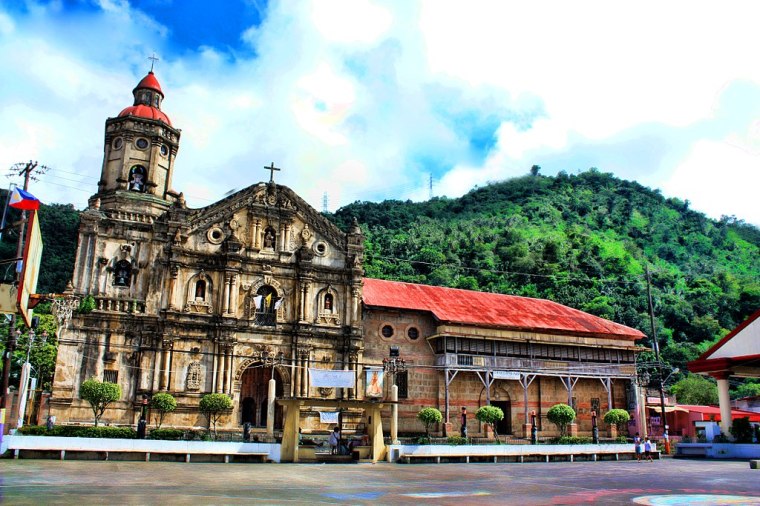 Saint Peter of Alcantara Parish Church, Pakil, Laguna, Home of Our Lady of Turumba – Photo by Richard Eusebio, own work, CC BY-SA 3.0, created 30 November 2011, https://en.wikipedia.org/wiki/Saint_Peter_of_Alcantara_Parish_Church#/media/File:The_Pakil_Church_or_the_San_Pablo_de_Alcantara_Church_in_Pakil,_Laguna.jpg
Saint Peter of Alcantara Parish Church, Pakil, Laguna, Home of Our Lady of Turumba – Photo by Richard Eusebio, own work, CC BY-SA 3.0, created 30 November 2011, https://en.wikipedia.org/wiki/Saint_Peter_of_Alcantara_Parish_Church#/media/File:The_Pakil_Church_or_the_San_Pablo_de_Alcantara_Church_in_Pakil,_Laguna.jpg
4. The image belonged to some missionaries who crossed Laguna de Bay in a launch. Unfortunately, the launch was shipwrecked due to a storm, some of its relics were washed ashore including the icon of the Virgin.
One September 15, 1788, some fishermen found the icon in their nets in Laguna de Bay, on the bank of the Matamig River. Believing it to be a religious image, they decided to bring it to a parish church. When the men carried the small painting, they found it too heavy.
They tried sailing in different directions with the icon until they brought it to the shore near Pakil Church5. When they headed that way, the wind and current aided their course. Upon landing, they left the heavy image on a rock so they could continue their fishing duties.
A group of women found the icon the following Sunday morning. Although it had rained during the night, the canvas was miraculously dry. When they tried to take the icon away, they could not move it; even the strongest among them, Mariangga, could not lift it. They quickly told the parish priest, who in turn, called the sacristans, choristers, and churchgoers at Mass to fetch the image. As they lifted the image, it gave way. The townsfolk around begun to sing and dance, giving birth to the turumba (see fact 6) and the devotion of Our Lady of Sorrows1, by the local people in Pakil6.
5. The second image of the Virgin Mary as Our Lady of Sorrows1 is a replica of the image of Nuestra Señora de las Angustias11 in Spain. This was episcopally crowned by the Bishop of Lipa, Alejandro Olalia, on May 23-24, 1953.
 Our Lady of Sorrows of Turumba – Photo source: https://www.facebook.com/SaBirhen/photos/a.358083401488074/358086178154463/?type=3&theater
Our Lady of Sorrows of Turumba – Photo source: https://www.facebook.com/SaBirhen/photos/a.358083401488074/358086178154463/?type=3&theater
The statue is enshrined at the retablo12 in the main altar of Saint Peter of Alcantara Parish Church4. The image is dressed in violet as a sign of sorrow for Her Son’s passion (the color of Lent).
The original image is enshrined in a separate retablo12 around bas reliefs13 of her Seven Sorrows14 at a chapel in the church of Saint Peter of Alcantara Parish Church5.
6. The Turumba Festival of Pakil6, Laguna8 is held in honor of Our Lady of Sorrows1. It is said to be the longest religious celebration in the Philippines. It consists of seven Turumba novenas15, or lupi, for seven months, commemorating the seven sorrows of the Virgin Mary14. I featured this festival in another post: NOW YOU KNOW: TURUMBA FESTIVAL, PAKIL, LAGUNA
 Photos used in collage taken from the official Facebook account of Saint Peter of Alcantara Parish
Photos used in collage taken from the official Facebook account of Saint Peter of Alcantara Parish
So far, the April celebration of this festival has been cancelled. Let us see if they will resume after this pandemic.

Photo source: https://news.mb.com.ph/2020/02/14/pakil-laguna-lgu-cancels-municipal-events-amid-covid-19-threat/
The information was obtained from the Facebook account, Saint Peter of Alcantara Parish, Wikipedia pages “Our Lady of Turumba”16 and “Saint Peter of Alcantara Parish Church”17. Sorry, I cannot seem to access my personal pictures for now. I will just add them when I can do so.
And now for a brief recall of the last time I visited this iconic image:
I brought my college buddies to Saint Peter of Alcantara Parish Church5 early March 2020. By walking through the passageway to the right of the church interior, almost near the altar, we went up the second floor to get to the adoration chapel where the original oil painting of Our Lady of Sorrows of Turumba was located. The walls on the ground floor and second floor are filled with framed information and pictures about Our Lady of Sorrows of Turumba in English and Filipino. We turned right from the stairs at the second level.
The adoration chapel is very peaceful. The iconic oil painting is located at the center of an intricately designed wall. A small glass container below the said painting is filled with blessed, sampaguita18 scented oil for visitors to apply on any part of their body which needs to be healed.
A tall box-counter to the left of the entrance, complete with paper, ball pen and small white letter envelopes, enables visitors to write their petitions. Voluntary donations are most welcome. You can just drop them all at the slot provided.
A small table-altar is located at the center of the room. A statue of Our Lady of Sorrows of Turumba is enclosed in a glass cabinet at the left side of the room. (insert pic)
There are cushioned wall seats with cushioned kneelers which are comfortable for seniors to sit and kneel on, if desired.
Do not forget to register in the logbook upon exit.
It would be advisable to simply buy the healing oil from the Turumba Store at the ground floor, on the right side, outside the church. A small and large plastic bottle of the oil are available for sale, your choice of sampaguita18 or menthol scent.
Do not forget to ask for a free piece of the cloth of Our Lady of Sorrows of Turumba that you can place in your wallet or bag to protect you against personal injury, accidents, fire and calamities. The kind woman-clerk is generous enough to give you extra pieces for relatives and friends who might need it too. Other religious items are also offered for sale.
This is not a sponsored post. I just want my readers to know more about Our Lady of Sorrows of Turumba.
Did you find this post informative? I would like to hear from you re your visit to the chapel of Nuestra Señora de los Dolores de Turumba in Saint Peter of Alcantara Parish Church. I would like to hear from you re other facts you might want to add to this post, or comment on the above facts.
See other interesting posts in this category (Now You Know), Smart Traveler (Short and Simple and Say, Say, Say), and other categories – SCapades and Pinoy Delights. Happy reading, and I hope that you will appreciate what I shared and some of the featured destinations will be part of your future travel plans!
Remember to share this post with your friends, follow me by clicking on the bottom right corner of your device, and do not forget to like this post. Thank you.
– – – – – – – – – – – – – – – – – – – – – – – – – –
The following terms are defined for interested readers, especially those with “Senior-Moments”, not familiar with Filipino, Catholic and architectural terms, and those too busy or lazy to Google such terms:
1Our Lady of Sorrows, Our Lady of Dolours, the Sorrowful Mother, Mother of Sorrows, Our Lady of Piety, Our Lady of the Seven Sorrows, or Our Lady of the Seven Dolours, refers to the Virgin Mary in relation to sorrows in her life, and portrays her in a sorrowful and tearful effect, with one or seven knives or daggers piercing her heart, often bleeding. Her feast is liturgically celebrated every September 15. The information was obtained from Wikipedia page “Our Lady of Sorrows.”19 See footnote 14 above for the seven sorrows of Our Lady.
2Tagalog refers to the second largest ethnolinguistic group in the Philippines, after the Visayan people, numbering around 30 million, with most of them inhabiting Metro Manila, the Calabarzon9 region10 in southern Luzon, the islands of Marinduque and Mindoro in the Mimoropa Region, as well as a plurality in the provinces of Aurora, Bataan, Bulacan, Nueva Ecija and Zambales in Central Luzon. The information was obtained from Wikipedia page “Tagalog (people).”20
4Simeon, according to Luke 2:25-35, was a just and devout man of Jerusalem who met Mary, Joseph, and Jesus as they entered the temple to fulfill the requirements of the Law of Moses on the 40th day from Jesus’ birth, at the presentation of Jesus at the Temple. The Holy Spirit visited Simeon and told him that he would not die until he had seen the Lord’s Christ. When he took Jesus into his arms, he uttered a prayer and gave a prophecy alluding to the crucifixion. This event is commemorated every February 2 as Candlemas, or more formally, the Presentation of the Lord, the Meeting of the Lord, or the Purification of the Virgin. His prophecy is used in the context of Our Lady of Sorrows1, and venerated as a saint with feast day On February 3. The information was obtained from Wikipedia page “Simeon (Gospel of Luke).”21
5St. Peter of Alcantara Parish Church is a Roman Catholic church located in the town of Pakil6, in the province7 of Laguna8, in the Calabarzon9 Region10 of the Philippines, under the patronage of Peter of Alcantara22. It was designated as the Diocesan Shrine23 of Nuestra Señora de los Dolores de Turumba. It enshrines the Our Lady of Sorrows of Turumba painting. The information was obtained from Wikipedia page “Saint Peter of Alcantara Parish Church.”24 Read a related post to know more about this church: ST. PETER OF ALCANTARA PARISH CHURCH, PAKIL, LAGUNA
6Pakil is a fifth class municipality25, in the province7 of Laguna8, in the Calabarzon9 Region10 of the Philippines. The town was named after Gat Paquil who ruled over this place when the Spaniards arrived in 1571. It became an independent town on May 12, 1676. Its name was officially changed from Paquil to Pakil by Executive Order No. 77 in 1927. It now has 13 barangays26. The information was obtained from Wikipedia page “Pakil, Laguna.”27
7A province is the primary administrative and political division in the Philippines. It is the second-level administrative sub-division of a region10. There are 81 provinces (called “lalawigan”) in the Philippines. Each province is governed by an elected legislature called the Sangguniang Panlalawigan, and by an elected governor. Remember, a province in the Philippines is divided into cities and municipalities25 (or towns), which in turn, are divided into barangays26, formerly called barrios. The information was obtained from Wikipedia page “Provinces of the Philippines.”28 See a related post: Foreign Seniors Ask: WHAT ARE PROVINCES IN THE PHILIPPINES?
8Laguna is a province7 in the Calabarzon9 Region10 of the Philippines, located southeast of Metro Manila, north of Batangas, west of Quezon, south of the province of Rizal, and east of Cavite. This is the 7th richest province in the country, the third largest province in the region, and hugs the southern shores of Laguna de Bay, the largest lake in the country. It is composed of 24 municipalities25 and 6 cities. The provincial capital is the town of Santa Cruz since 1858, after Bay (1581-1688) and Pagsanjan (1688-1858). It is historically one of the first provinces in the Philippines to have been visited by Christian missionaries. Its main natural resources are its agriculture and fisheries, owing to its position near Laguna de Bay and the surrounding lowlands. The information was obtained from the Wikipedia page “Laguna (province)”29
9Calabarzon, or Region IV-A, or Southern Tagalog Mainland, is a Philippine region10 located in the island group of Luzon, with Calamba as its regional center. CALABARZON is an acronym for this region’s five provinces7: CAvite, LAguna8, BAtangas, Rizal, QueZON. It is the most populated region in the country and the country’s second most densely populated region, after Metro Manila. This region is located south of the National Capital Region (NCR), bordered by the provinces of Aurora, Bulacan and Metro Manila in the north, Manila Bay in the west, Tayabas Bay and Sibuyan Sea in the south, and Lamon Bay and the Bicol Region in the east. The information was obtained from the Wikipedia page “Calabarzon”30 and https://lga.gov.ph/region/region-iv-a.
10A region is an administrative division based on geographical, cultural and ethnological characteristics. Each region is further subdivided in provinces7, composed of cities and municipalities25 (or towns), which in turn, are divided into barangays26, formerly called barrios, according to Wikipedia page “Regions of the Philippines”.31 See a related post: Foreign Seniors Ask: WHAT ARE THE REGIONS OF THE PHILIPPINES?
11Nuestra Señora de las Angustias, Virgen de las Angustias, or Our Lady of Sorrows, is a Marian dedication worshipped in the city of Ayamonte, Huelva province, in the Autonomous Community of Andalusia, in Spain. It is housed in the main altar of the church of Nuestra Señora de las Angustias in the said city. It is a 1.13 meter high polychrome wood sculpture group, made up of the typical scene of the Sorrowful Mother: The Virgin on her knees, covered with a large blue cloak over a red dress, holding her Son by the head, and she makes a gesture of wiping tears from His cheeks. This iconic image was said to have been discovered in a big heavy box at the end of the 16th century, when the Coritos brothers cast their nets in the San Bartolome estuary in Portugal. They reported the figure to the authorities, and subsequently, a parish was erected in 1576, in honor of the image. Her feast day is on September 8. The information was obtained from the Wikipedia page “Nuestra Señora de las Angustias”32
12A retablo is a large altarpiece painting or an elaborate wooden structure with sculpture, or a combination of the two, above an altar, and an elaborate framework enclosing it, according to the Wikipedia page “Retablo”.33
13Bas relief refers to a type of art in which shapes are cut from the surrounding stone so that they stand out slightly against a flat surface.34
14The Seven Sorrows (or Dolors) are events in the life of the Blessed Virgin Mary that are a popular devotion and are frequently depicted in art: the prophecy of Simeon4 (Luke 2:34-35), the flight into Egypt (Matthew 2:13-23), the loss of the Child Jesus in the temple of Jerusalem (Luke 2:43-45), Mary’s meeting Jesus on the Via Dolorosa35 (not in the New Testament), the Crucifixion of Jesus on Mount Calvary (Matthew 27:34-50, Mark 15:23-37, Luke 23:33-46, John 19:18-30), the piercing of the side of Jesus with a spear, and His descent from the Cross (John 18:34), and the burial of Jesus by Joseph of Arimathea36 (Matthew 27:57-61, Mark 15:43-47, Luke 23:50-53. John 19:40-42). These Seven Sorrows should not be confused with the five Sorrowful Mysteries of the Rosary. The information was obtained from the Wikipedia page “Our Lady of Sorrows”.19
15A novena (Latin for “nine”) is an ancient tradition of devotional praying in Christianity, consisting of private or public prayers repeated for nine successive days or weeks. During a novena, the devotees make petitions, implore favors, or obtain graces by worshipping Jesus Christ, and asking for intercessions of the Virgin Mary, or the saints of the faith. Novena prayers are customarily printed in small booklets, and the novena is often dedicated to a specific saint, angel, a specific Marian title of the Blessed Virgin Mary, or one of the personages of the Holy Trinity. The information was obtained from the Wikipedia page “Novena”.37
16“Our Lady of Turumba,” accessed February 3, 2018, https://en.wikipedia.org/wiki/Our_Lady_of_Turumba
17“Saint Peter of Alcantara Parish Church,” accessed February 3, 2018, https://en.wikipedia.org/wiki/Saint_Peter_of_Alcantara_Parish_Church
18Sampaguita, Jasminum sambac, Arabian jasmine or Sambac jasmine, is a species of attractive and sweetly fragrant jasmine native to tropical Asia, from the Indian subcontinent to Southeast Asia, used as a fragrant ingredient in perfumes and jasmine tea. It is a small evergreen shrub or vine, with smooth ovate leaves, clustered and strongly scented flowers which bloom all throughout the year, with purple or black berry-fruits. Sampaguita is the national flower of the Philippines, adopted on February 1, 1934, via Proclamation No. 652, issued by American Governor-General Frank Murphy. Filipinos string the flowers into leis, corsages, and sometimes crowns, commonly sold by vendors outside churches. The garlands are used as a form of bestowing honor, veneration, or accolade. The information was obtained from the Wikipedia page “Jasminum sambac”.38
19“Our Lady of Sorrows,” accessed February 3, 2018, https://en.wikipedia.org/wiki/Our_Lady_of_Sorrows
20“Tagalog people,” accessed February 3, 2018, https://en.wikipedia.org/wiki/Tagalog_people
21“Simeon (Gospel of Luke),” accessed February 3, 2018, https://en.wikipedia.org/wiki/Simeon_(Gospel_of_Luke)
22Peter of Alcantara (1499 – 1562) was a Spanish Franciscan friar, beatified in Rome by Pope Gregory XV on 1622, and canonized by Pope Clement IX on 1669. It is said that Peter slept very little, awake most of the time when his brother friars were sleeping, and that he always slept sitting up, so he is considered the patron saint of night watchmen and nocturnal adoration of the Blessed Sacrament. His feast day is October 18. The information was obtained from Wikipedia page “Peter of Alcantara.”39
23A diocesan shrine is a designation given to a church “to which numerous members of the faithful make pilgrimage for a special reason of piety.” It must exceed other churches in terms of worship, Christian formation, and social services. The honor is conferred by the local bishop or archbishop, who canonically elevates the church to a diocesan shrine. The information was obtained from Wikipedia page “National Shrine.”40
24“Saint Peter of Alcantara Parish Church,” accessed February 3, 2018, https://en.wikipedia.org/wiki/Saint_Peter_of_Alcantara_Parish_Church
25A municipality is a small, single urban administrative division, or local government unit (LGU), in the Philippines which has corporate status and powers of self-government or jurisdiction as granted by law. It is a unit under a province7, subdivided into barangays26, and is locally called “bayan”. In the Philippines, a municipality is headed by a mayor, a vice mayor, and members of the Sangguniang Bayan (legislative branch). It can enact local policies and laws, enforce them, and govern its jurisdictions. It can enter into contracts and other transactions through its elected and appointed officials and can tax as well. It enforces all local and national laws. There are almost 1,500 municipalities in the Philippines. The information was obtained from Wikipedia page “Municipalities of the Philippines.”41 See a related post: Foreign Seniors Ask: HOW MANY CITIES ARE THERE IN THE PHILIPPINES?
26A barangay in the Philippines is the smallest administrative division in the Philippines, headed by a barangay captain, aided by a Sangguniang Barangay (Barangay Council). It is the native Filipino term for a village. It was formerly called a barrio. In a metropolitan area, a barangay is an inner city neighborhood, a suburb, or a suburban neighborhood. The word barangay originated from the term “balangay”, a kind of boat used by a group of Austronesian people who migrated to the Philippines. A number of barangays grouped together is called a district. The information was obtained from Wikipedia page “Barangay.”42
27“Pakil, Laguna,” accessed February 3, 2018, https://en.wikipedia.org/wiki/Pakil,_Laguna
28“Provinces of the Philippines,” accessed February 3, 2018, https://en.wikipedia.org/wiki/Provinces_of_the_Philippines
29“Laguna (province),” accessed February 3, 2018, https://en.wikipedia.org/wiki/Laguna_(province)
30“Calabarzon,” accessed February 3, 2018, https://en.wikipedia.org/wiki/Calabarzon
31“Regions of the Philippines,” accessed February 3, 2018, https://en.wikipedia.org/wiki/Regions_of_the_Philippines
32“Nuestra Señora de las Angustias (Ayamonte),” accessed February 3, 2018, https://es.wikipedia.org/wiki/Nuestra_Señora_de_las_Angustias_(Ayamonte)
33“Retablo,” accessed February 3, 2018, https://en.wikipedia.org/wiki/Retablo
34https://dictionary.cambridge.org/us/dictionary/english/bas-relief
35Via Dolorosa, Sorrowful Way or Way of Suffering, is believed to be the actual path Jesus walked to Mount Calvary on His way to the crucifixion in the Old City of Jerusalem. The winding route from the former Antonia Fortress to the Church of the Holy Sepulchre, a distance of about 600 meters (2,000 feet), is a celebrated place of Christian pilgrimage. This current route was established in the 18th century and is marked by nine Stations of the Cross43, with the remaining five stations, located inside the Church of the Holy Sepulchre. The information was obtained from Wikipedia page “Via Dolorosa.”44
36Joseph of Arimathea, according to all four canonical gospels, was the man who assumed responsibility for the burial of Jesus after His crucifixion. According to John 19:38, upon hearing of Jesus’ death, this secret disciple of Jesus “asked Pilate (Roman governor who presided at the trial of Jesus and gave the order for His crucifixion) that he might take away the body of Jesus, and Pilate gave him permission.” He immediately purchased a line shroud (Mark 15:46) and proceeded to Golgotha to take the body of Jesus down from the cross. Joseph and Nicodemus took the body and bound it in linen cloths with the spices that the latter bought, according to John 19:39-40. He is the Patron of Funeral Directors and Undertakers and his feast day is March 17. The information was obtained from Wikipedia page “Joseph of Arimathea.”45
37“Novena,” accessed February 3, 2018, https://en.wikipedia.org/wiki/Novena
38“Jasminum sambac,” accessed February 3, 2018, https://en.wikipedia.org/wiki/Jasminum_sambac
39“Peter of Alcantara,” accessed February 3, 2018, https://en.wikipedia.org/wiki/Peter_of_Alc%C3%A1ntara
40“National shrine,” accessed February 3, 2018, https://en.wikipedia.org/wiki/National_shrine
41“Municipalities of the Philippines,” accessed February 3, 2018, https://en.wikipedia.org/wiki/Municipalities_of_the_Philippines
42“Barangay,” accessed February 3, 2018, https://en.wikipedia.org/wiki/Barangay
43The Stations of the Cross or the Way of the Cross, Ways of Sorrow, or Via Crucis, refers to the series of fourteen images depicting Jesus Christ on the day of His crucifixion and accompanying prayers, considered to be patterned after the Via Dolorosa35 in Jerusalem which is believed to be the actual path Jesus walked to Mount Calvary for His crucifixion. The devotion of Roman Catholics to do the Way of the Cross during Holy Week is like a spiritual pilgrimage through the contemplation of the Passion of Christ (the final period of the life of Jesus from His entrance in Jerusalem till His crucifixion). The 14 stations are: (1) Pilate condemns Jesus to die; (2) Jesus accepts His cross; (3) Jesus falls for the first time; (4) Jesus meets His mother, Mary; (5) Simon helps carry the cross; (6) Veronica wipes the face of Jesus; (7) Jesus falls for the second time; (8) Jesus meets the women of Jerusalem; (9) Jesus falls for the third time; (10) Jesus is stripped of His clothes; (11) Jesus is nailed to the cross; (12) Jesus dies on the cross; (13) Jesus is taken down from the cross; and, (14) Jesus is placed in the tomb. The information was obtained from the Wikipedia page “Stations of the Cross”.46 See a related post: Foreign Seniors Ask: WHAT IS VISITA IGLESIA?
44“Via Dolorosa,” accessed February 3, 2018, https://en.wikipedia.org/wiki/Via_Dolorosa
45“Joseph of Arimathea,” accessed February 3, 2018, https://en.wikipedia.org/wiki/Joseph_of_Arimathea
46”Stations of the Cross,” accessed February 3, 2018, https://en.wikipedia.org/wiki/Stations_of_the_Cross


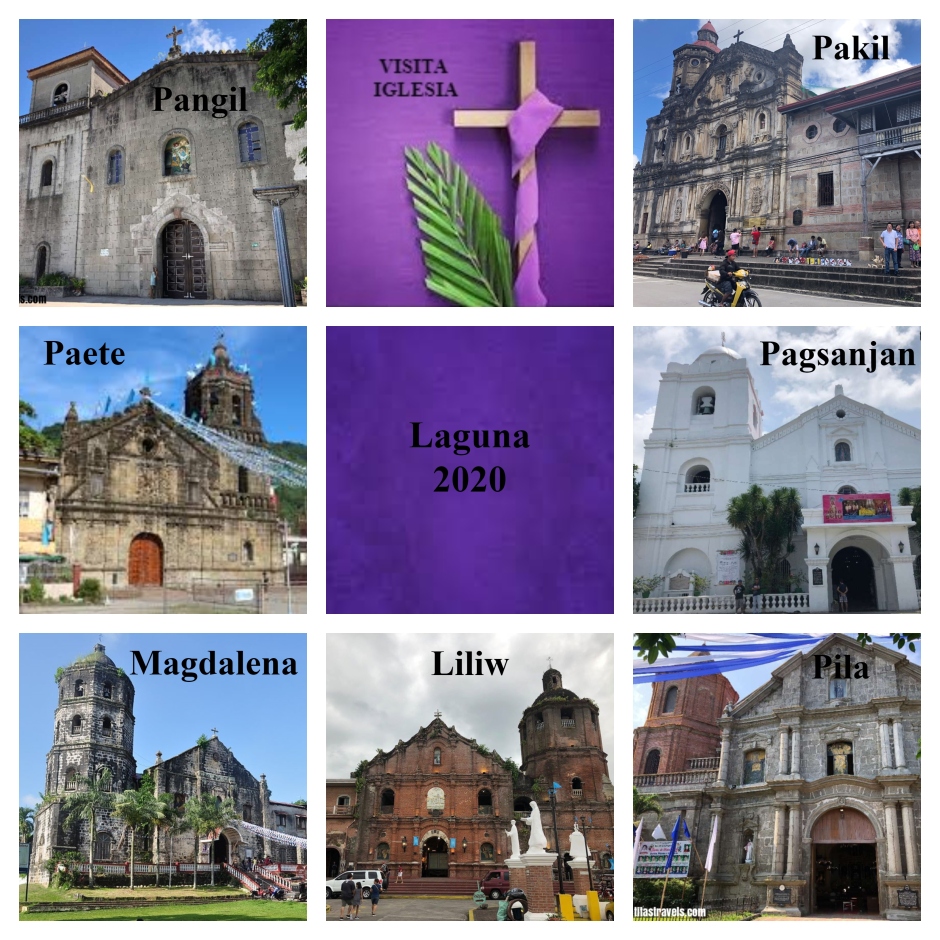
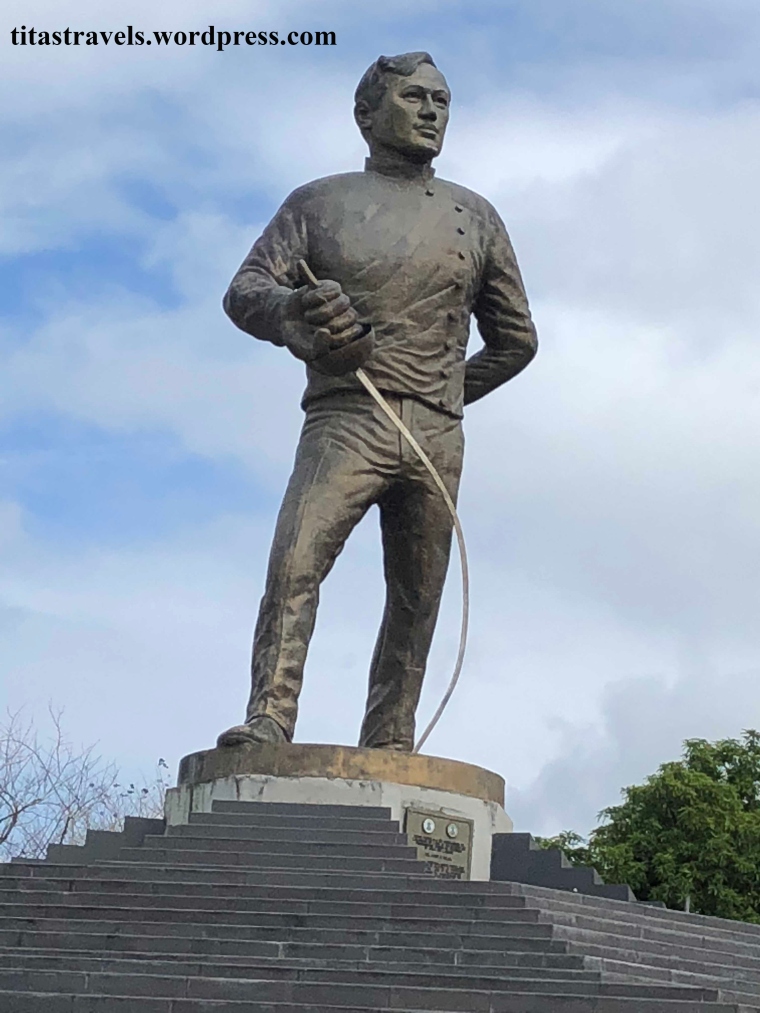


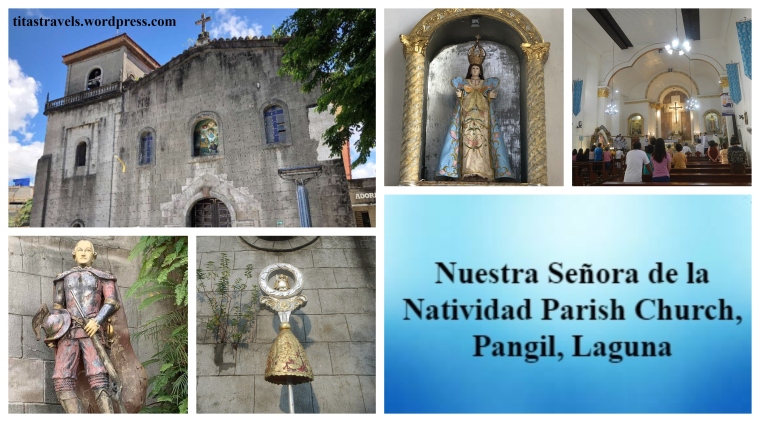
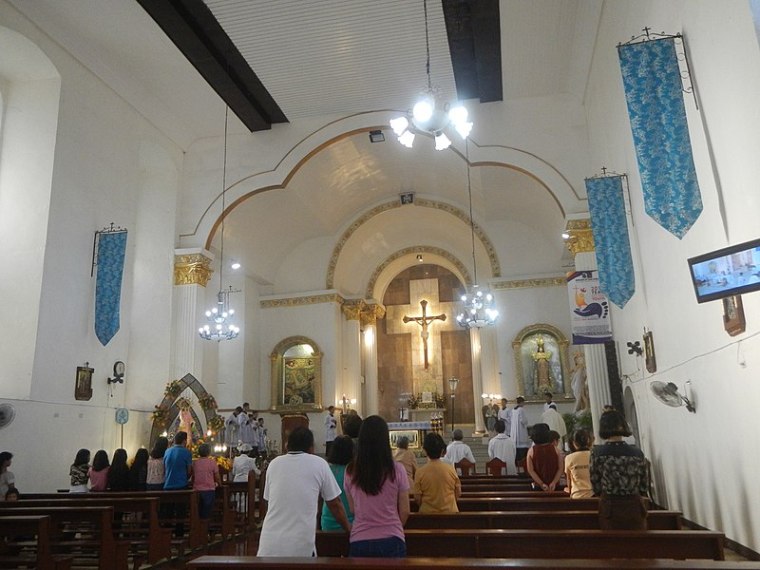 Interior, facing the altar, Nuestra Señora de la Natividad Parish Church, Pangil, Laguna Source: Judgefloro, own work, created 12 May 2019,
Interior, facing the altar, Nuestra Señora de la Natividad Parish Church, Pangil, Laguna Source: Judgefloro, own work, created 12 May 2019,  Interior, looking at the entrance, Nuestra Señora de la Natividad Parish Church, Pangil, Laguna – Source: Judgefloro, own work, created 12 May 2019,
Interior, looking at the entrance, Nuestra Señora de la Natividad Parish Church, Pangil, Laguna – Source: Judgefloro, own work, created 12 May 2019, 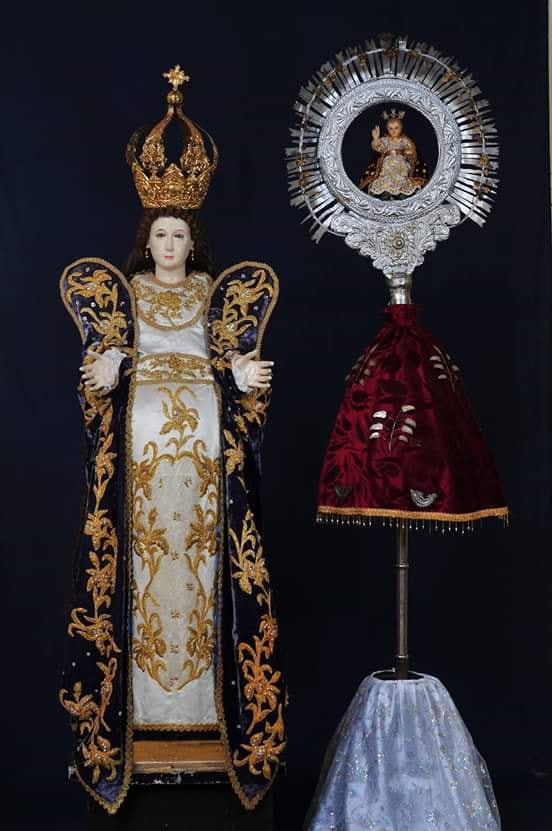
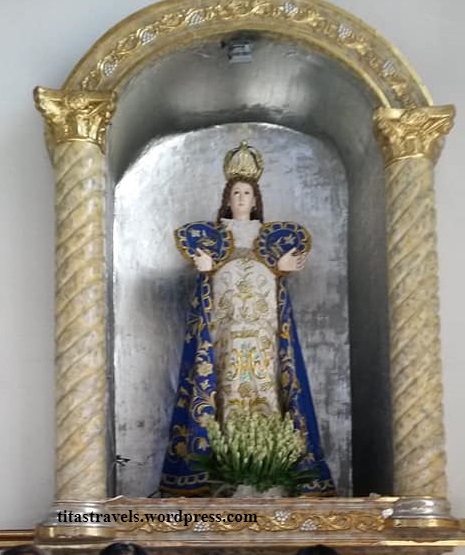
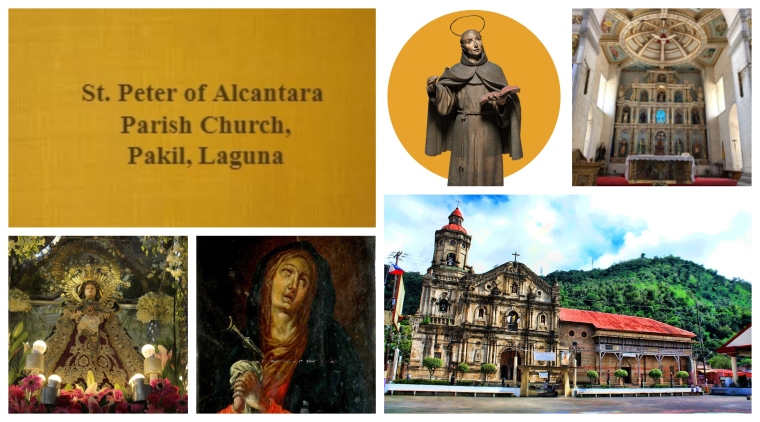

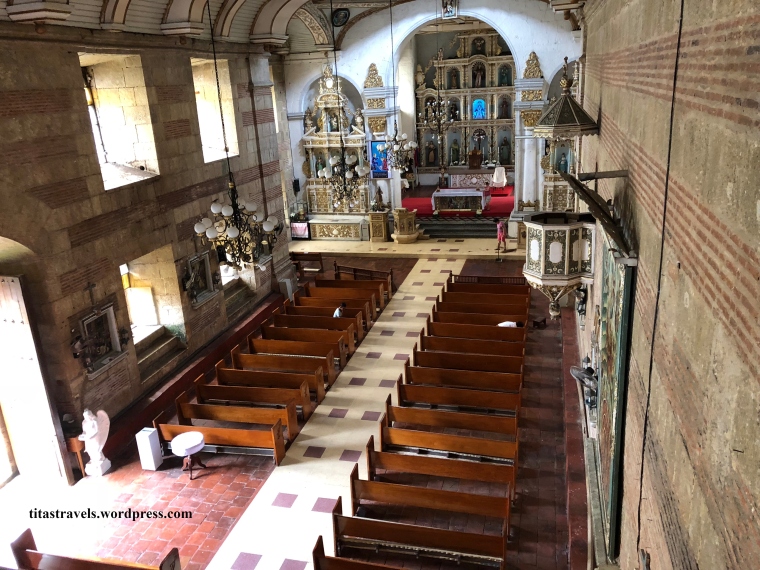
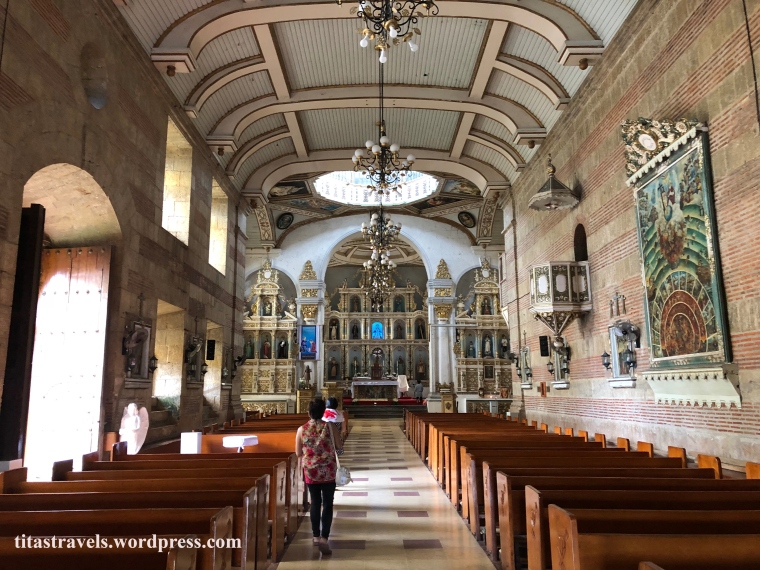
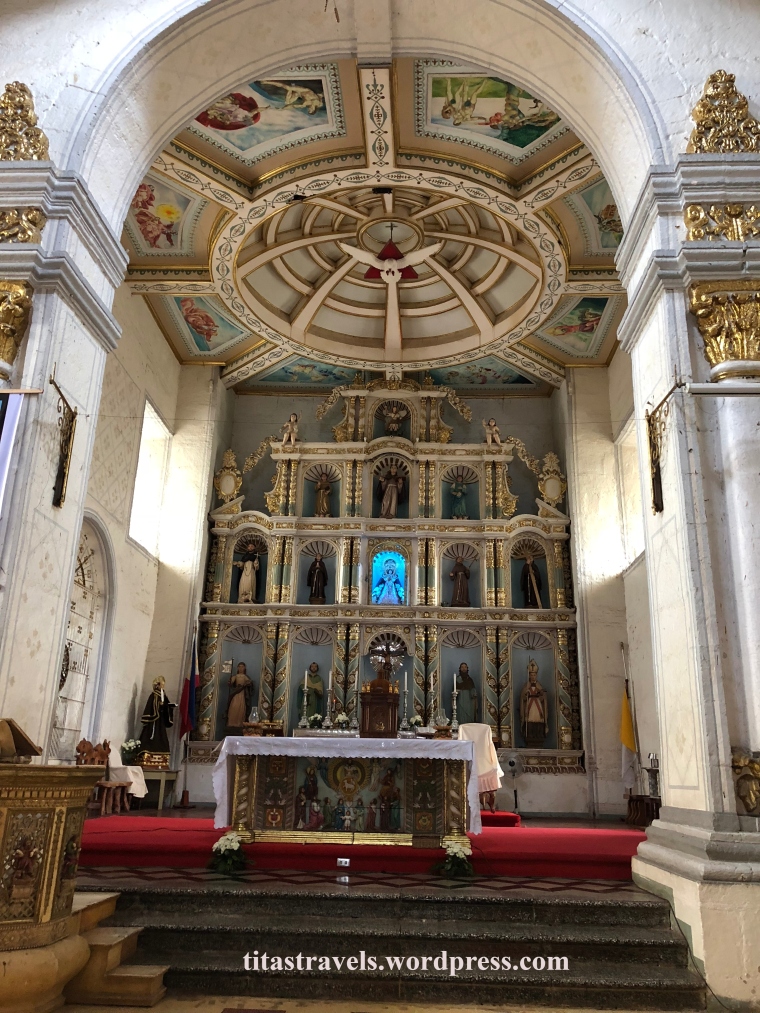
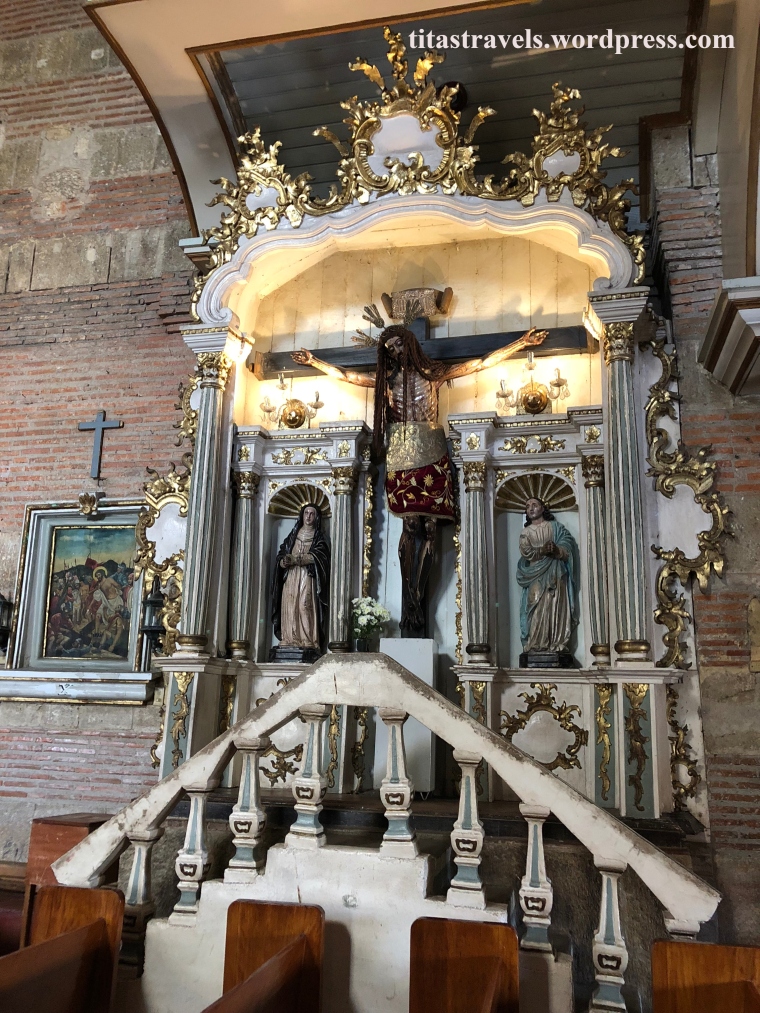
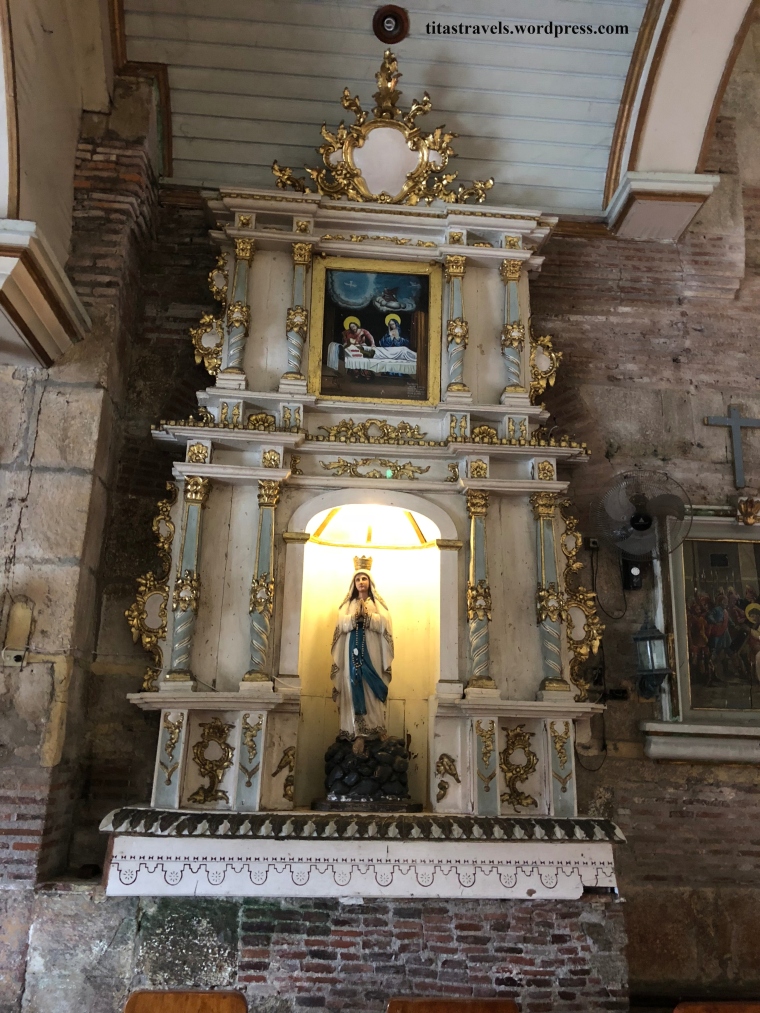
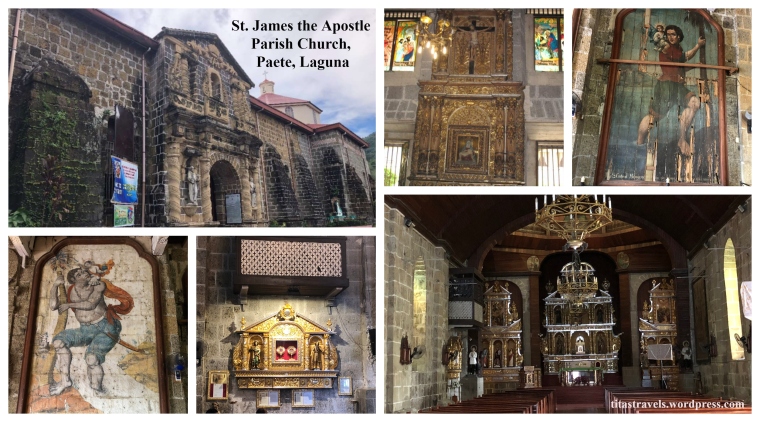
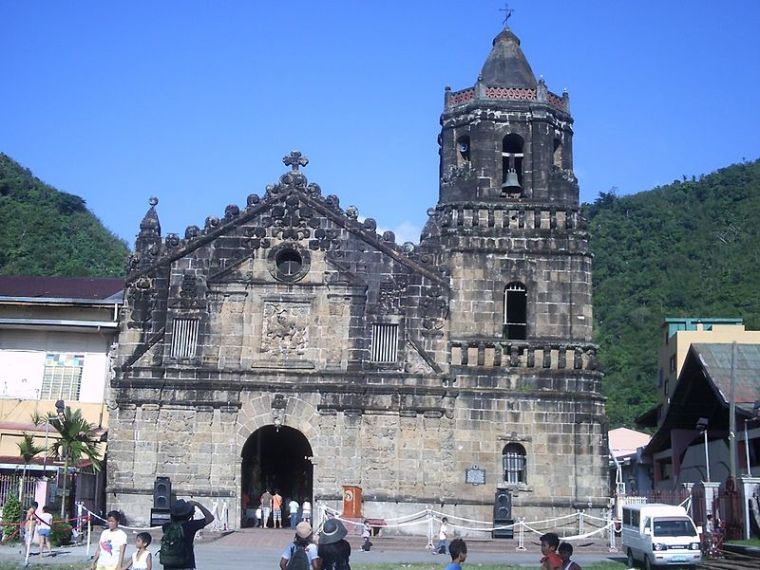 Facade, Saint James the Apostle Parish Church, Paete, Laguna – Photo by Carlo Joseph M. Moskito, own work, CC BY-SA 4.0, created 15 October 2014,
Facade, Saint James the Apostle Parish Church, Paete, Laguna – Photo by Carlo Joseph M. Moskito, own work, CC BY-SA 4.0, created 15 October 2014, 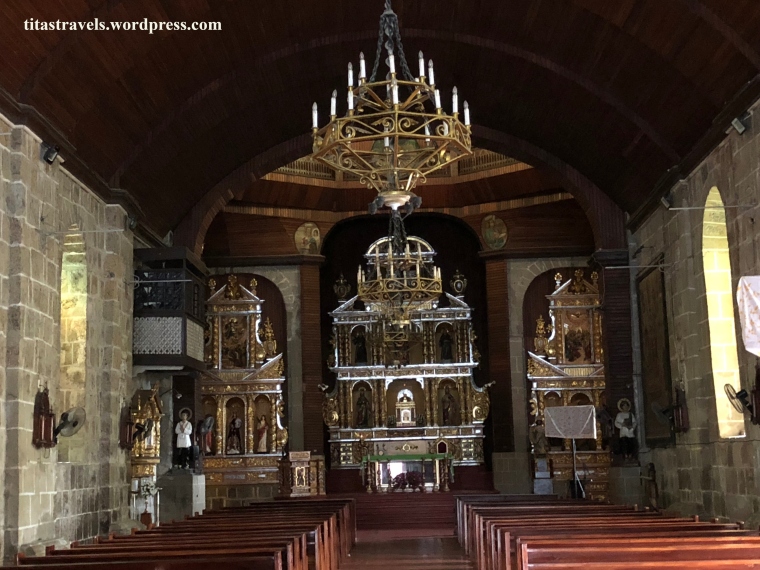 Interior, St. James the Apostle Parish Church, Paete, Laguna
Interior, St. James the Apostle Parish Church, Paete, Laguna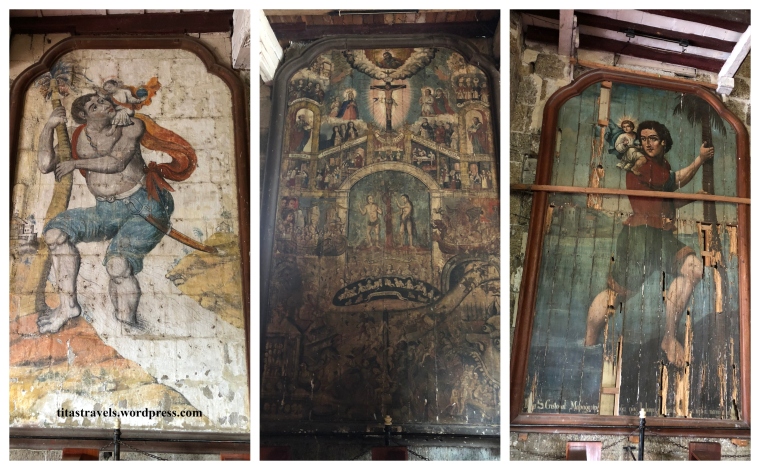 Murals, Interior, St. James the Apostle Parish Church, Paete, Laguna
Murals, Interior, St. James the Apostle Parish Church, Paete, Laguna
 These pictures were taken during my Visita Iglesia 2011.
These pictures were taken during my Visita Iglesia 2011. Photos in collage obtained from the official Facebook account of Hana:
Photos in collage obtained from the official Facebook account of Hana: 